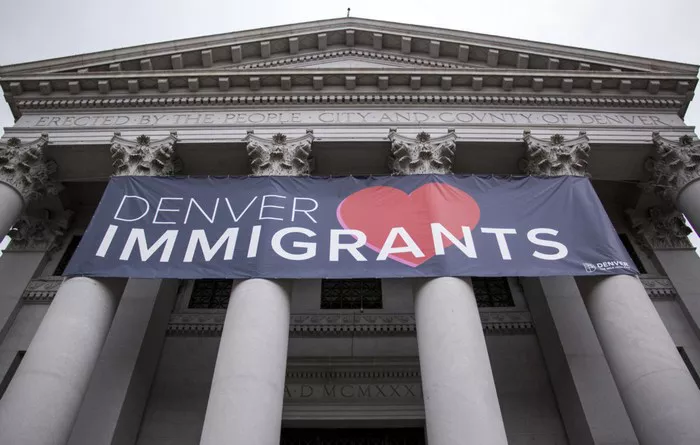Denver, CO – In a bid to reshape its approach to immigration amid a changing landscape, Denver announced its pioneering Denver Asylum Seeker Program on Wednesday, signaling a significant departure from its previous emergency sheltering model.
Mayor Mike Johnston unveiled the initiative, which aims to provide comprehensive support to new immigrants, including housing, rent and food assistance, and job training over a six-month period. With an initial cap set at approximately 1,000 individuals, the program will prioritize those currently within the shelter system, numbering around 800 individuals.
Under the new policy, immigrants arriving after April 10 will be accommodated in congregate shelters for a brief period, typically ranging from 24 to 72 hours. Subsequently, they will be directed to external services, connected with relatives in Denver if available, or facilitated in transitioning to other cities.
This transition represents a significant departure from Denver’s prior emergency sheltering strategy, which incurred substantial costs. In a bid to inform and align expectations, Denver Human Services dispatched two representatives to El Paso, Texas, to engage with both incoming immigrants and local nonprofits. Jon Ewing, a spokesperson for DHS, emphasized the importance of clarity and pre-planning, stating, “We want [immigrants] to know immediately. This is what the program is now… We find that it’s best that people start planning ahead of time. It’s just making sure that everyone’s on the same page.”
Denver’s outreach to El Paso mirrors similar efforts undertaken by other cities, including Chicago and New York, as Ruben Garcia, founder and executive director of Annunciation House, noted. However, Garcia expressed skepticism regarding the efficacy of such measures in dissuading immigrants from seeking shelter in destination cities.
Ewing clarified that Denver’s outreach aims primarily to inform rather than deter prospective immigrants, citing the detrimental effects of misinformation. Notably, he referenced past instances where misconceptions led immigrants to believe they would receive work authorizations in New York, despite federal regulations indicating otherwise.
Denver’s expenditure on immigration assistance has been substantial, totaling approximately $68 million and aiding over 40,000 immigrants, primarily towards sheltering. Facing escalating costs, Mayor Johnston underscored the necessity of recalibrating services to maintain fiscal sustainability.
Amid concerns from nonprofits regarding potential exacerbation of homelessness, Johnston remains optimistic about the program’s ability to redirect immigrants elsewhere. He highlighted the transient nature of many immigrants passing through Denver, often driven by external factors rather than a desire to settle in the city.
As Denver navigates this transformative phase in its immigration policy, the city seeks to strike a balance between humanitarian assistance and fiscal responsibility, acknowledging the broader challenges and complexities inherent in immigration management.


